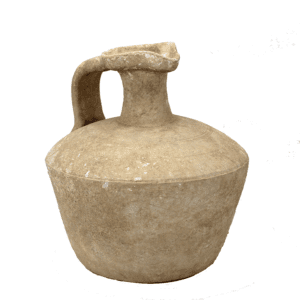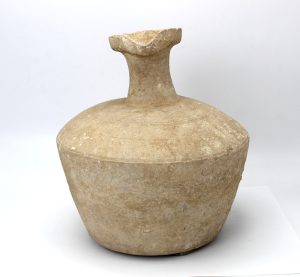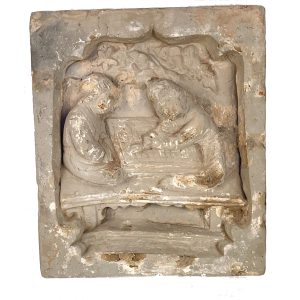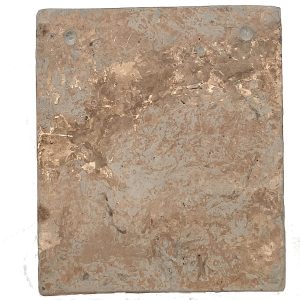SOLD Ancient Earthenware Carinated Flagon (3191BLB) Roman North Africa
Original price was: $775.00.$650.00Current price is: $650.00.H: 4.5” W: 3” D: 2.75” | SOLD
This Roman ceramic flagon is a uniquely shaped vessel used to store and pour potable liquids. A crème slip carinated jug with a high profile and a trefoil pouring spout, it has a strap handle attached from the carinated edge to just below the rim for easy handling. Roman coarse wars like this were use for liquids and to make offerings to household deities.




